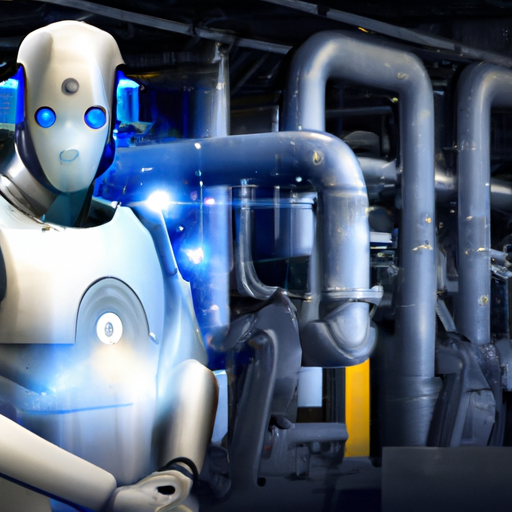Robotics and Artificial Intelligence (AI)
Introduction
As a business owner, you may have heard the terms robotics and artificial intelligence (AI) thrown around quite often. While these concepts might seem complex, they hold great potential for businesses in various industries. In this article, we will delve into the relationship between robotics and AI and explore how these technologies can benefit your business.

Understanding Robotics
Robotics is a field of technology that deals with the design, development, and application of robots. A robot is a machine that can perform tasks autonomously or with minimal human intervention. These tasks can range from basic repetitive actions to complex decision-making processes.
In the business world, robots are widely used in manufacturing, logistics, healthcare, and many other sectors. They can operate in environments that are too dangerous, monotonous, or physically demanding for humans. By automating these tasks, businesses can significantly improve efficiency and productivity while reducing costs.
The Role of Artificial Intelligence
Artificial Intelligence is the science of developing intelligent systems that can simulate human intelligence and behavior. It involves using algorithms and computational models to enable machines to perceive, learn, reason, and make decisions.
When it comes to robotics, AI plays a crucial role in enhancing their capabilities. By incorporating AI, robots can analyze and interpret vast amounts of data, adapt to dynamic environments, and perform tasks that require complex decision-making.
Advantages of Combining Robotics and AI
The combination of robotics and AI opens up a world of possibilities for businesses. Here are some key advantages:
1. Increased Efficiency
- By integrating AI into robots, businesses can streamline their operations and achieve higher levels of efficiency.
- AI-powered robots can analyze data in real-time, make intelligent decisions, and execute tasks with precision and speed.
- This can lead to improved productivity, reduced errors, and faster time-to-market.
2. Enhanced Safety
- AI-driven robots can be programmed to perform hazardous tasks without putting human lives at risk.
- These robots can work in dangerous environments such as nuclear power plants, chemical factories, or disaster areas.
- By delegating these tasks to robots, businesses can minimize the potential for accidents and ensure the safety of their workforce.
3. Improved Customer Experience
- With AI, robots can better understand and respond to customer needs.
- For instance, chatbots powered by AI can provide instant and accurate responses to customer inquiries, enhancing customer support services.
- Additionally, AI-powered robots can be used in retail settings to provide personalized recommendations and assistance to shoppers, improving the overall customer experience.
4. Data-Driven Decision Making
- AI allows robots to collect and analyze large volumes of data, providing businesses with valuable insights for decision-making.
- Whether it is optimizing supply chain operations, improving product quality, or forecasting market trends, AI-powered robots can process data faster and more accurately, enabling businesses to make informed decisions.
Challenges and Considerations
While the potential benefits of robotics and AI are immense, there are several challenges and considerations to keep in mind:
1. Cost
- Implementing robotics and AI technologies can be expensive, especially for small and medium-sized businesses.
- It is important to carefully evaluate the expected return on investment and consider factors such as maintenance, training, and integration costs.
2. Workforce Transition
- Introducing robots into the workforce often raises concerns about job displacement.
- It is essential for businesses to plan and implement strategies to reskill employees and create new roles that are complementary to robots.
- This will help maintain a smooth transition and ensure the workforce remains engaged and productive.
3. Ethical and Legal Considerations
- AI-powered robots raise ethical and legal questions, particularly regarding privacy, liability, and decision-making ethics.
- Businesses need to ensure that proper regulations and guidelines are followed to address these concerns and maintain transparency, accountability, and fairness.
Conclusion
The fusion of robotics and AI holds significant potential for businesses across various industries. By leveraging these technologies, businesses can enhance efficiency, safety, customer experience, and decision-making processes. However, it is crucial to carefully consider the challenges and ethical considerations associated with implementing robotics and AI to achieve sustainable and responsible growth.